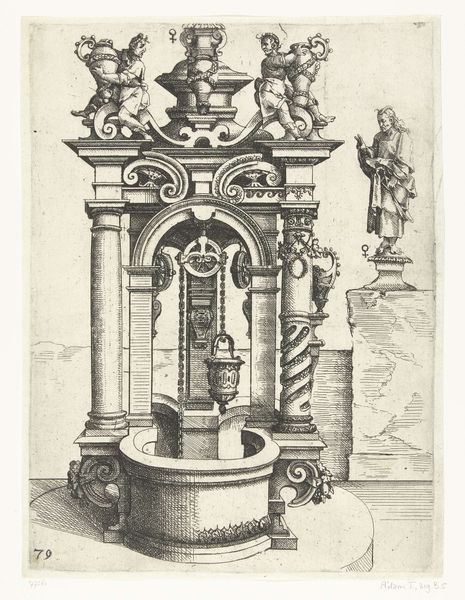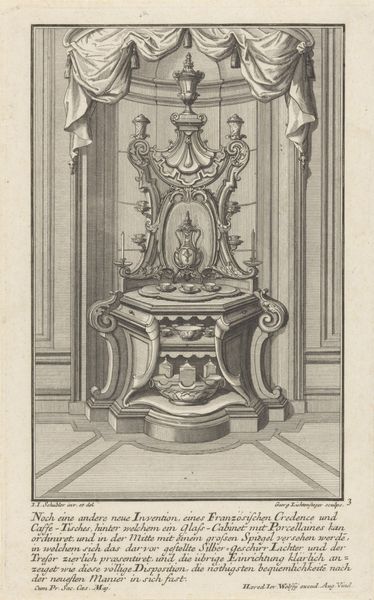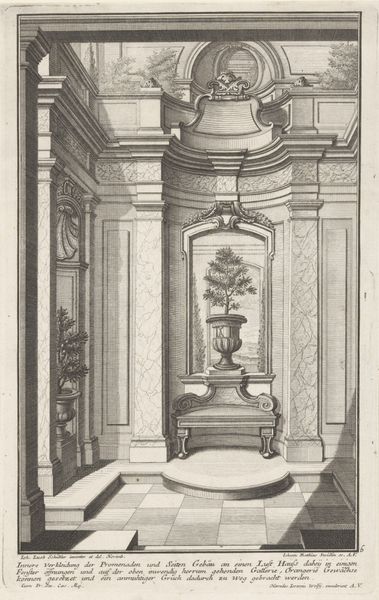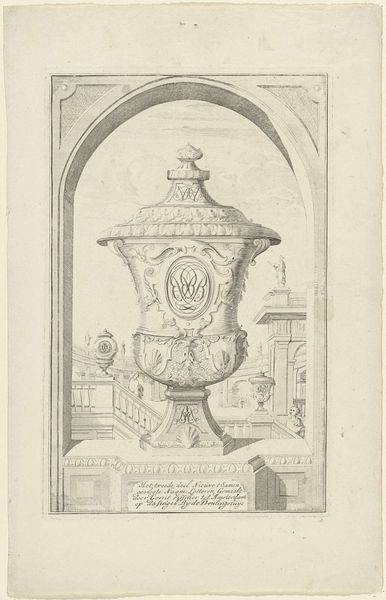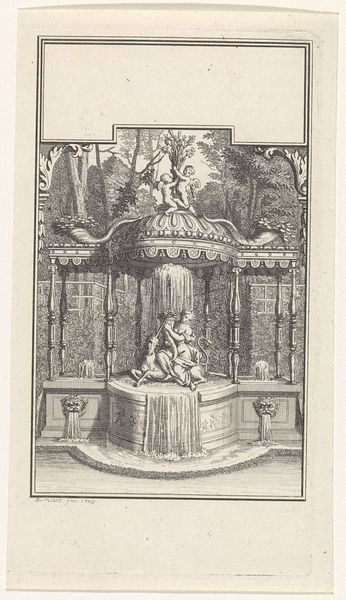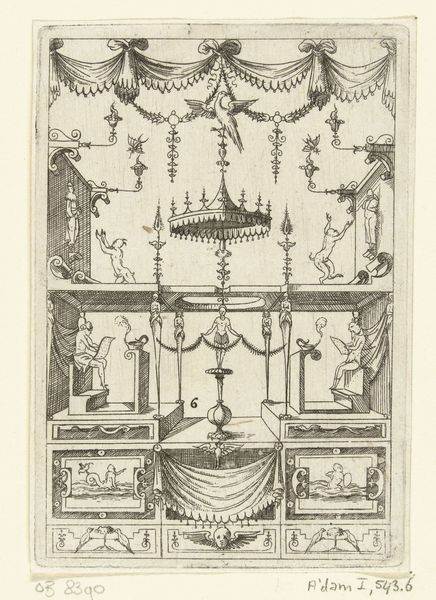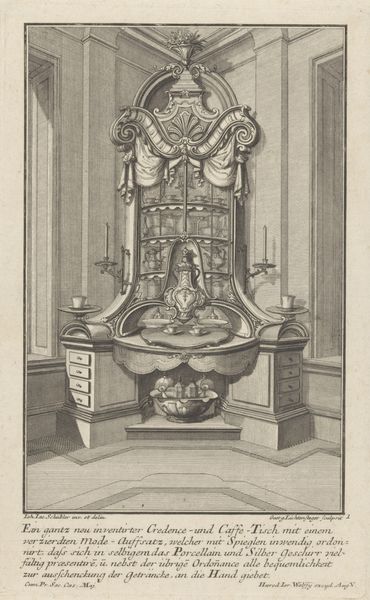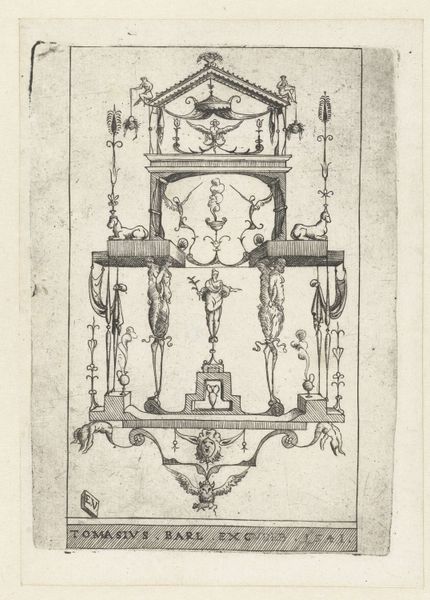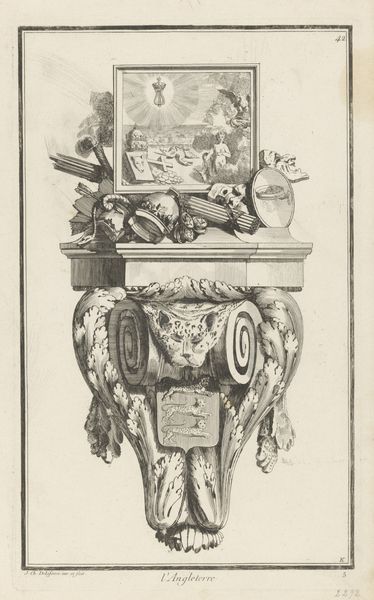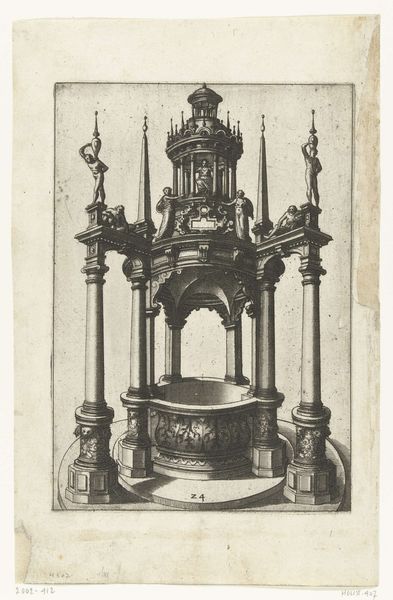
engraving, architecture
#
old engraving style
#
form
#
geometric
#
line
#
cityscape
#
northern-renaissance
#
engraving
#
architecture
Dimensions: height 247 mm, width 181 mm
Copyright: Rijks Museum: Open Domain
Wendel Dietterlin created this engraving, "Twee ronde putten", likely in the late 16th century. The image presents two elaborately decorated wells. The well, a source of life-giving water, has been a potent symbol throughout history, representing purity, renewal, and the depths of the unconscious. Notice how Dietterlin elevates a simple water source through architectural embellishments reminiscent of classical motifs. These forms echo elements found in ancient Roman fountains, transforming a mundane object into a statement of cultural and civic pride. Across cultures, water is not merely a resource, but a sacred element. Think of the countless myths and rituals associated with springs and wells, where offerings are made to appease the spirits, or where the act of drawing water becomes a symbolic quest for knowledge or healing. The well, therefore, is more than just a functional structure; it is a vessel of collective memory. Dietterlin's design taps into this deep well of symbolism, reminding us of the primal importance of water in our lives and the enduring power of images to evoke profound emotions.
Comments
No comments
Be the first to comment and join the conversation on the ultimate creative platform.
